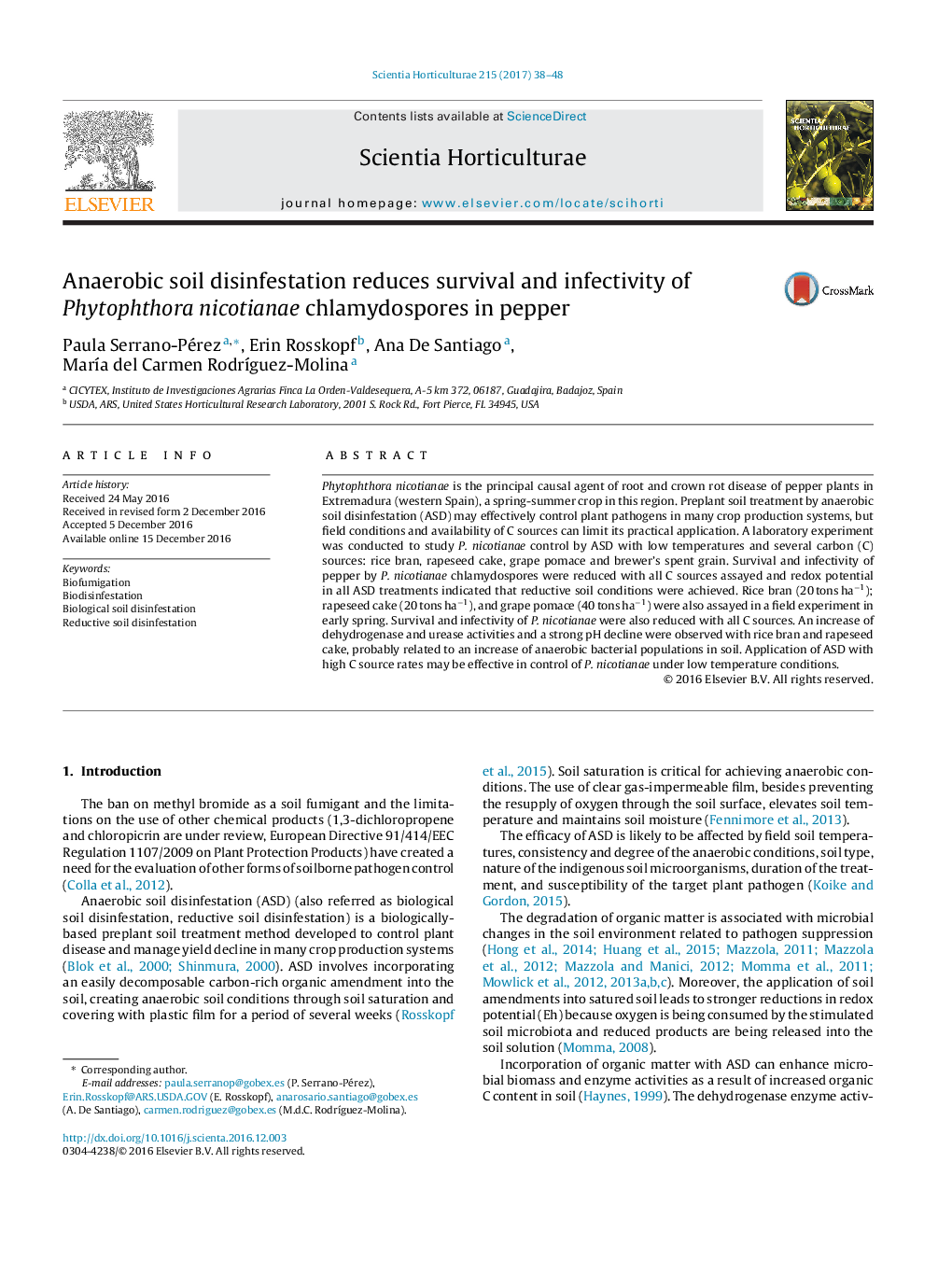| Article ID | Journal | Published Year | Pages | File Type |
|---|---|---|---|---|
| 5769571 | Scientia Horticulturae | 2017 | 11 Pages |
â¢An alternative to soil chemical fumigants and summer solarization is proposed.â¢ASD was tested with moderate soil temperatures typical of spring in western Spain.â¢ASD reduced the survival and infectivity of P. nicotianae inoculum.â¢Rice bran and rapeseed cake showed the most satisfactory results as C-sources to ASD.
Phytophthora nicotianae is the principal causal agent of root and crown rot disease of pepper plants in Extremadura (western Spain), a spring-summer crop in this region. Preplant soil treatment by anaerobic soil disinfestation (ASD) may effectively control plant pathogens in many crop production systems, but field conditions and availability of C sources can limit its practical application. A laboratory experiment was conducted to study P. nicotianae control by ASD with low temperatures and several carbon (C) sources: rice bran, rapeseed cake, grape pomace and brewer's spent grain. Survival and infectivity of pepper by P. nicotianae chlamydospores were reduced with all C sources assayed and redox potential in all ASD treatments indicated that reductive soil conditions were achieved. Rice bran (20 tons haâ1); rapeseed cake (20 tons haâ1), and grape pomace (40 tons haâ1) were also assayed in a field experiment in early spring. Survival and infectivity of P. nicotianae were also reduced with all C sources. An increase of dehydrogenase and urease activities and a strong pH decline were observed with rice bran and rapeseed cake, probably related to an increase of anaerobic bacterial populations in soil. Application of ASD with high C source rates may be effective in control of P. nicotianae under low temperature conditions.
